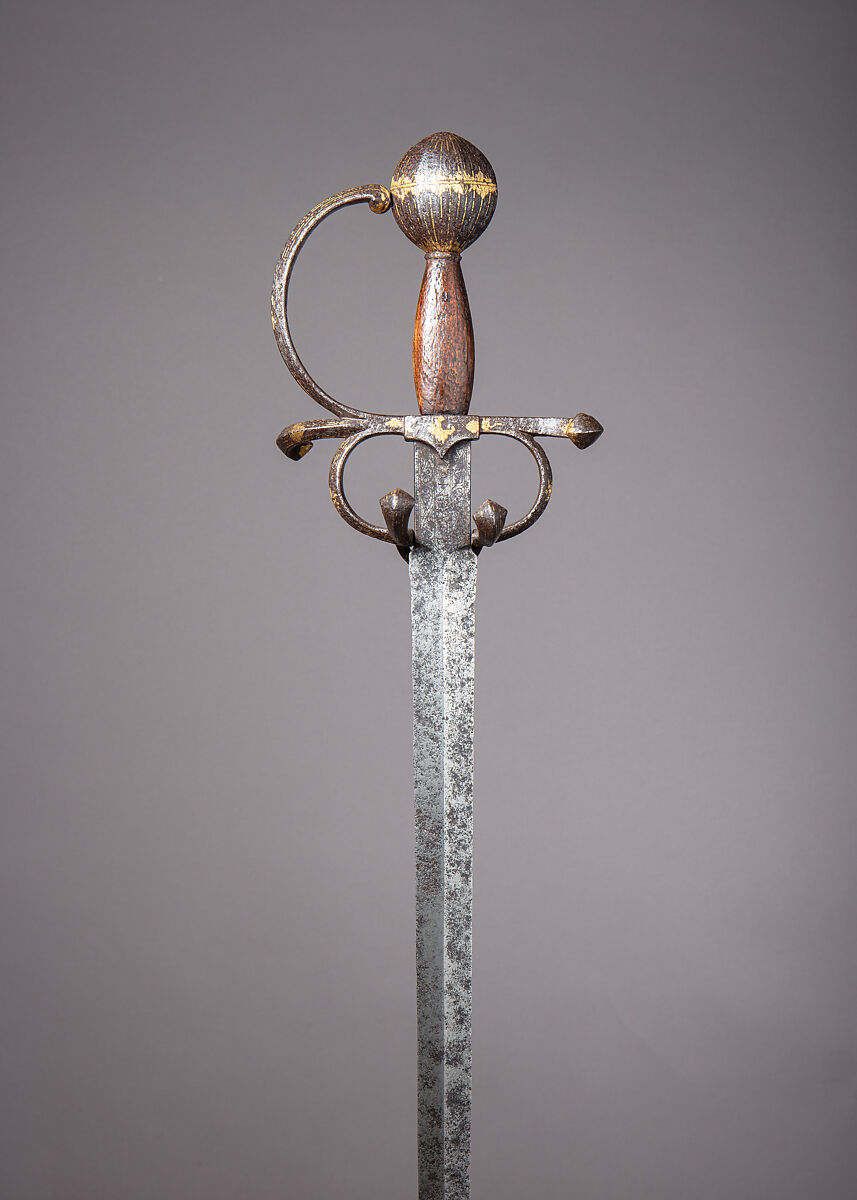
| myArmoury.com is now completely member-supported. Please contribute to our efforts with a donation. Your donations will go towards updating our site, modernizing it, and keeping it viable long-term.
Last 10 Donors: Graham Shearlaw, Anonymous, Daniel Sullivan, Chad Arnow, Jonathan Dean, M. Oroszlany, Sam Arwas, Barry C. Hutchins, Dan Kary, Oskar Gessler (View All Donors) |
| Author |
Message |
Pedro Paulo Gaião

|
 Posted: Thu 04 Jan, 2024 9:04 am Post subject: Knuckle Bows on Straight Swords: Cultural Issue? Posted: Thu 04 Jan, 2024 9:04 am Post subject: Knuckle Bows on Straight Swords: Cultural Issue? |
 |
|

https://www.metmuseum.org/art/collection/search/21934
Charles V's spada da lato (c. 1550), now in the MET, features a rare sight in Iberian and German/Norse sideswords and rapiers I came across: a knuckle bow.
Arms and Armor attempted to explain the arrival of early knuckle bows here, but while it's clear the earliest knuckle bows appeared in falchion-esque type weapons, it's adoption in straight swords seens to be ... geographically issued.
The earliest "true early rapier" I could ever find is Gustav Vasa's Rapier, dated c. 1550 and made either in the Swedish Workshop or in the German Workshop that built the former. One of it's interesting aspects is how it doesn't feature a knuckle bow, something that I also can't recall in the Portuguese and Spanish spada da lato's and rapiers of that time.
But, as Arms and Armor pointed, there's a number of straight swords with knuckle bows in Italy or of Italian origins already by the late 15th century. Do you guys think it makes sense to conclude, at least for the 1480-1560/80, that Iberian, German and who else more either didn't do them, or rarely did them?

Spanish rapier from c. 1620, at the MET
https://www.metmuseum.org/art/collection/search/25058

Italian spada da lato from c. 1540, note the schiavona-styled guard. I suspect knuckle bows might have some slavic influence, which might explain why Venetian swords are so proeminent in knuckle-bow guards.
“Burn old wood, read old books, drink old wines, have old friends.”
Alfonso X, King of Castile (1221-84)
|
|
  |
 |
|
Ryan S.
|
|
  |
 |
|
|
You cannot post new topics in this forum
You cannot reply to topics in this forum
You cannot edit your posts in this forum
You cannot delete your posts in this forum
You cannot vote in polls in this forum
You cannot attach files in this forum
You can download files in this forum
|
All contents © Copyright 2003-2025 myArmoury.com — All rights reserved
Discussion forums powered by phpBB © The phpBB Group
Switch to the Basic Low-bandwidth Version of the forum
|

